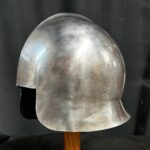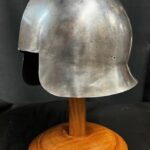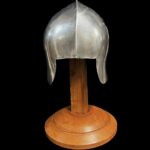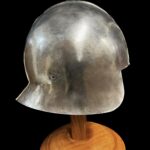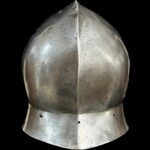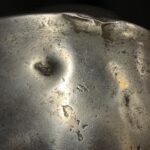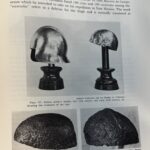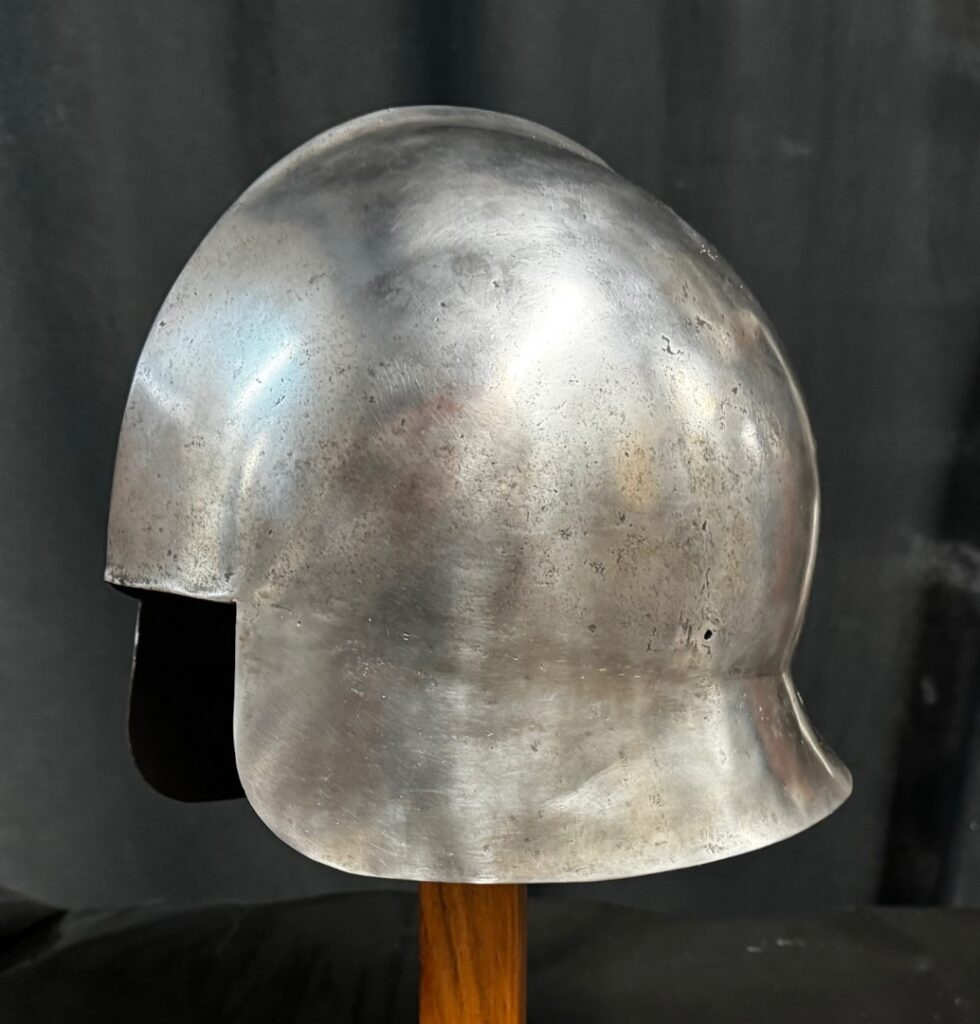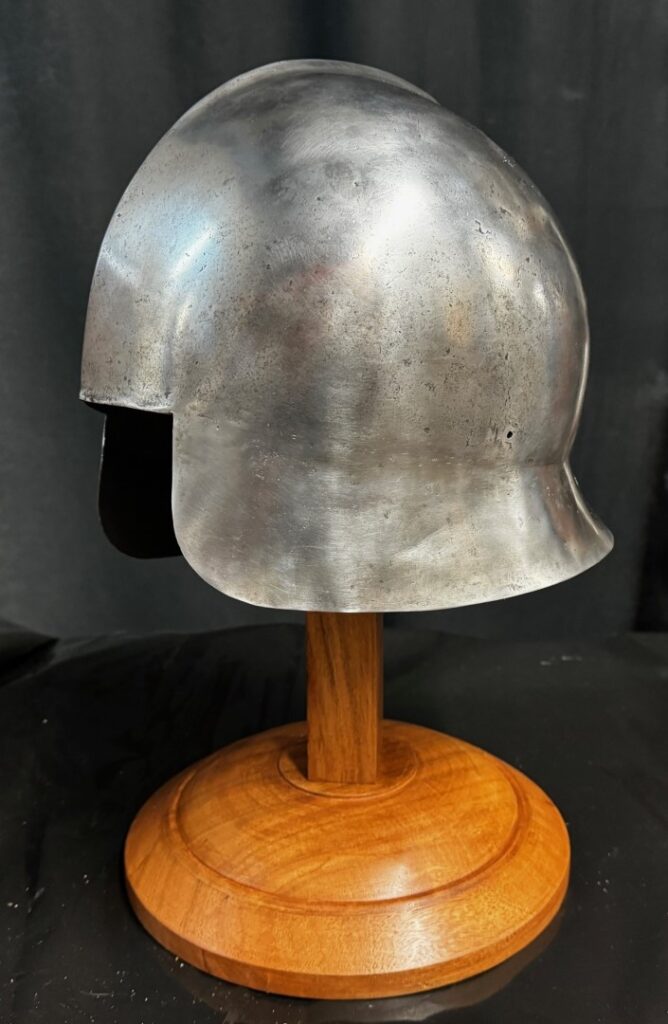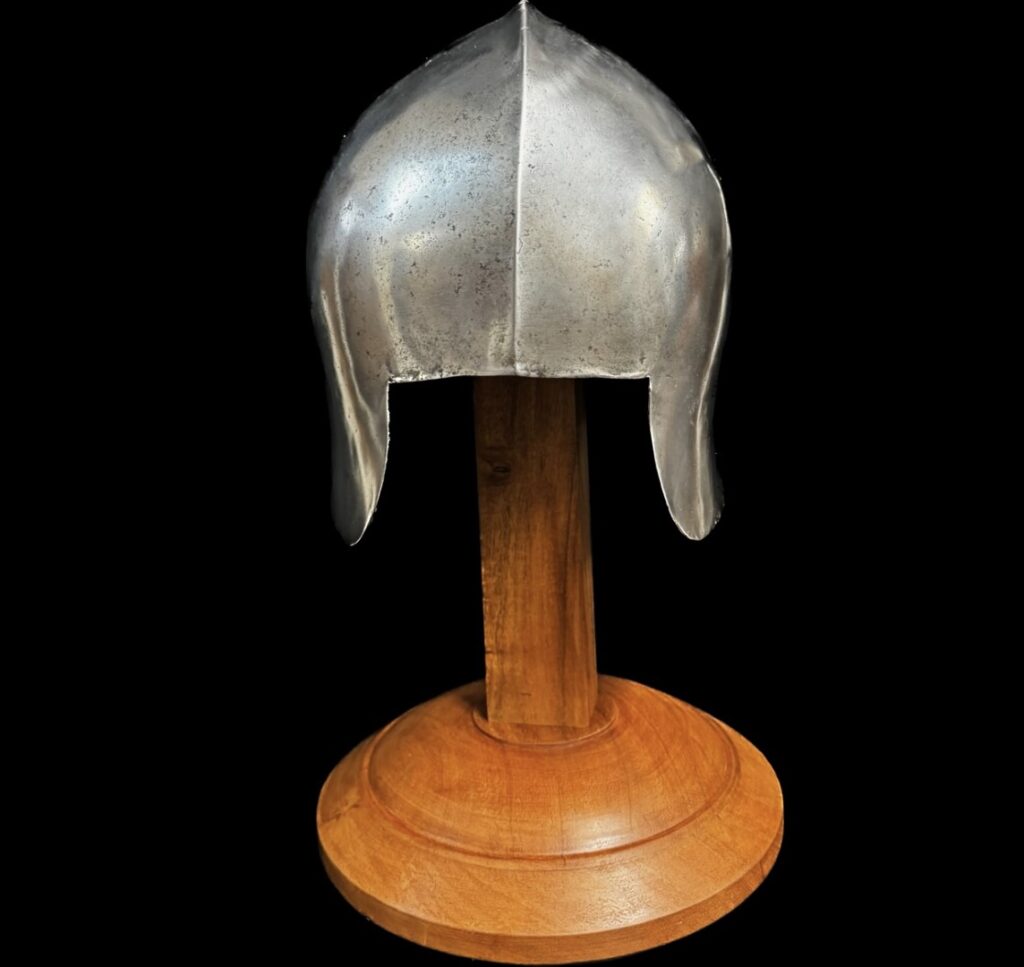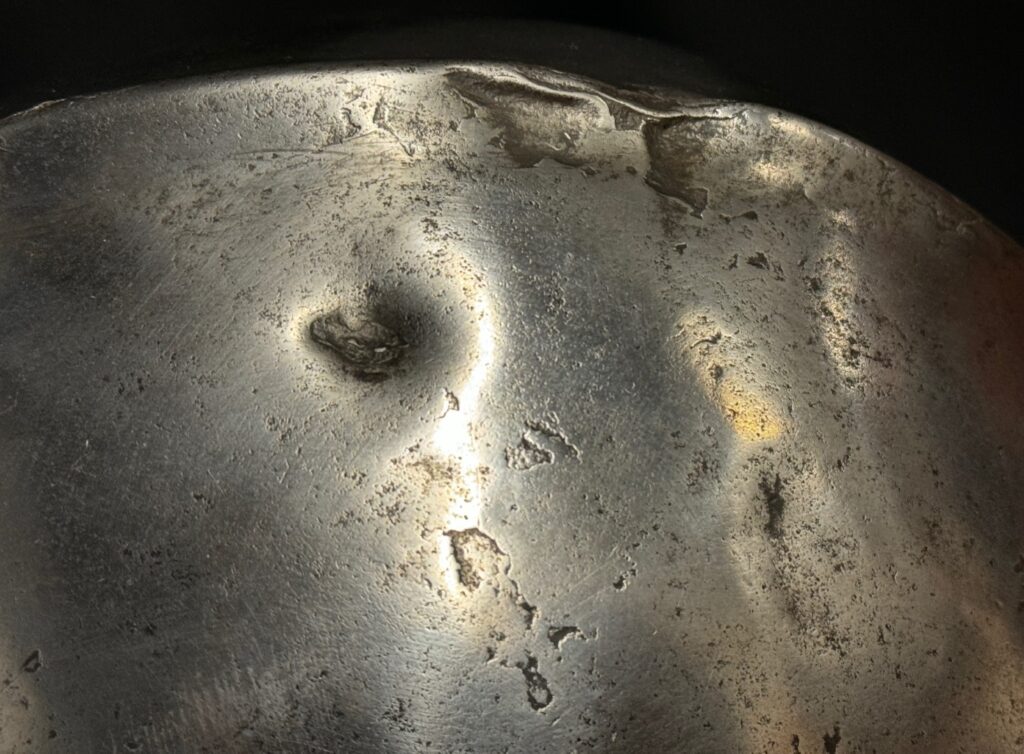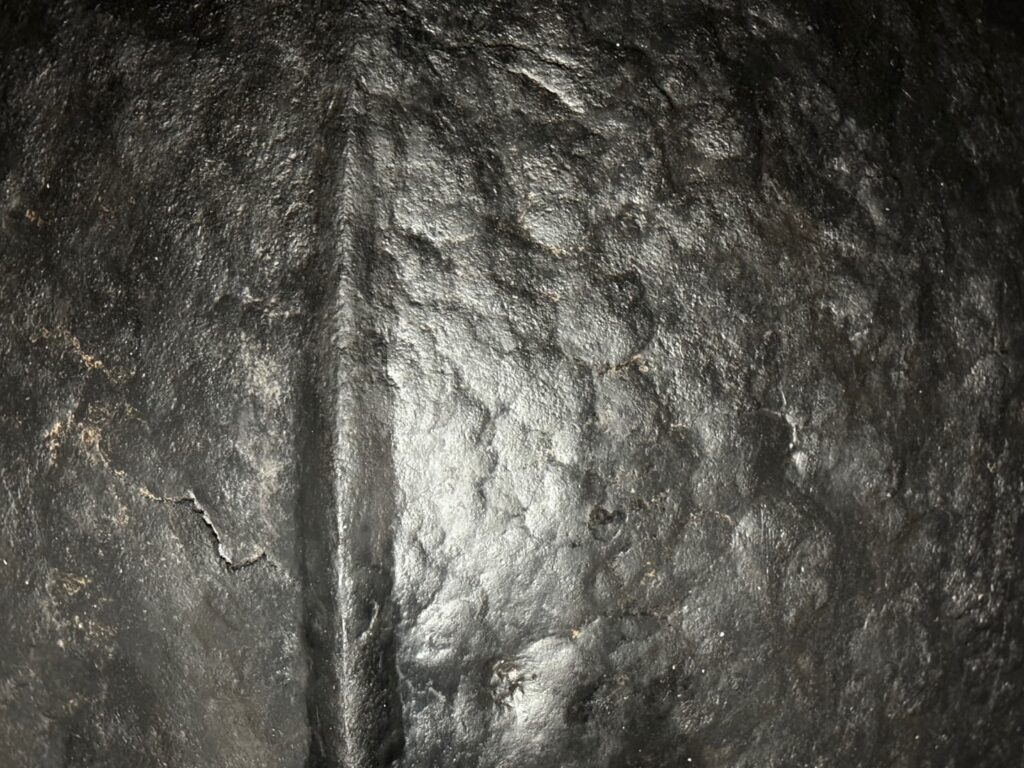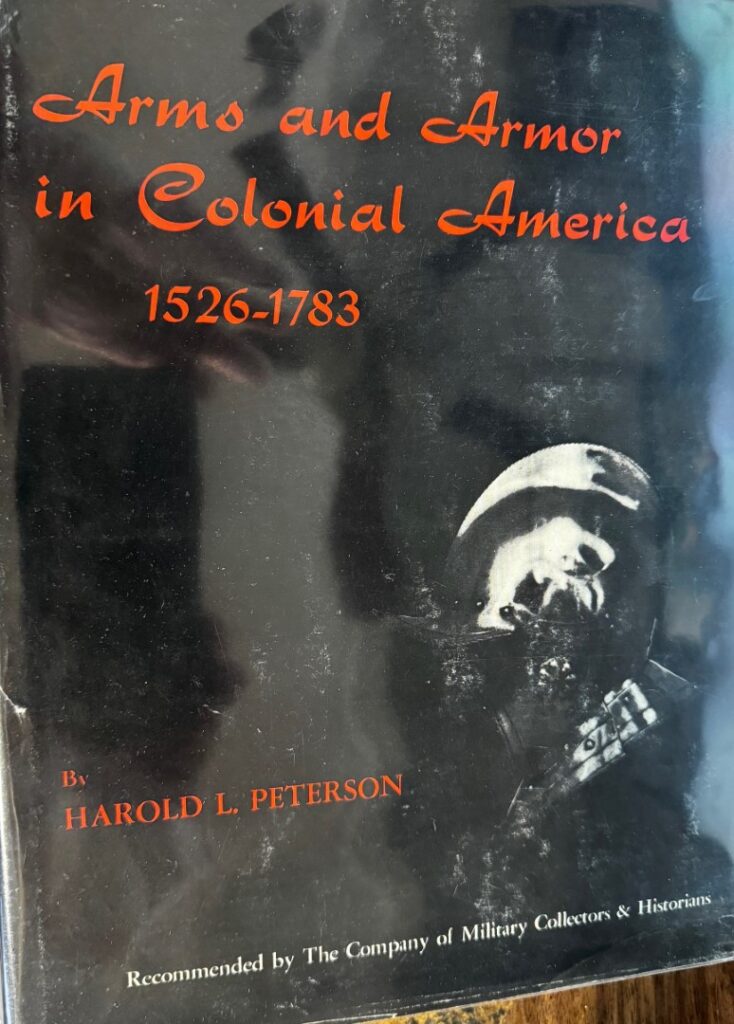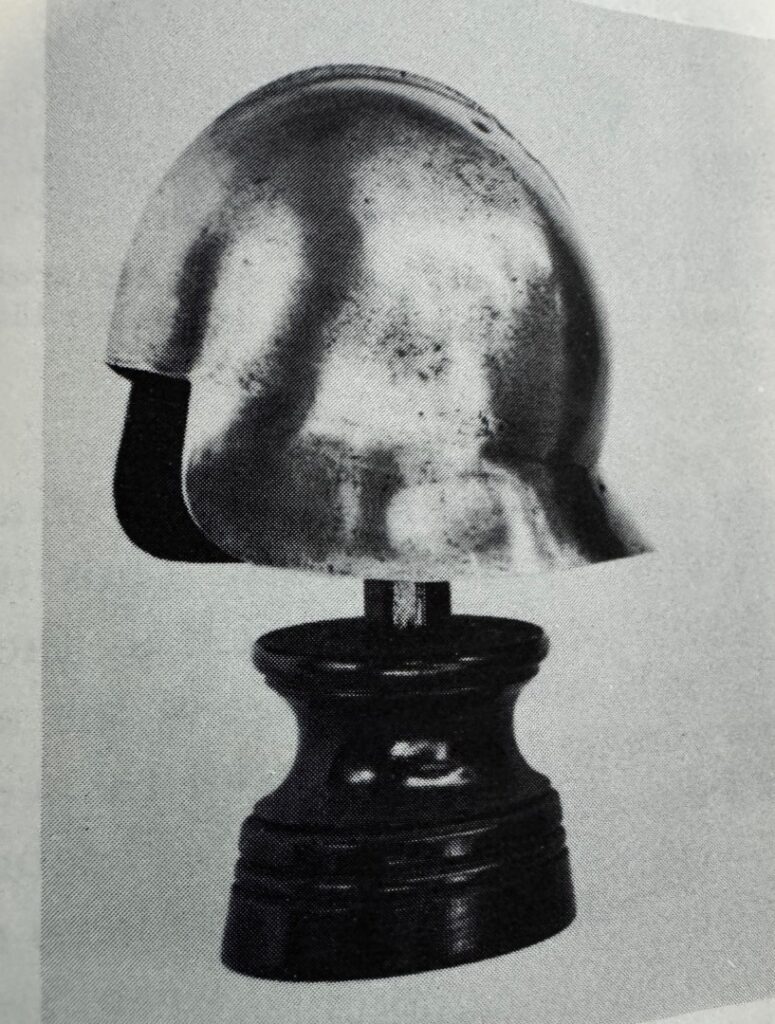1645) RARE AND IMPORTANT GOTHIC ARCHER’S SALLET CIRCA 1480:
Introduction: An important helmet with an impeccable provenance from one of the finest collectors/scholars in the field of arms and armor. This is what true collectors dream and pray for!
Discussion: The archer’s sallet is a variant of the traditional sallet but with (1) a much shorter tail for more movement and (2) an open face for better visibility. As the name implies, the archer’s sallet was used by archers who seldom were drafted into the infantry during a battle, but nonetheless, the recipients of a returning volley of arrows from the opposing army’s archers. The (A) tail of the sallet was much shorter, so the archer could have more movement to aim and follow a moving target. A short tail was essential when the archer leaned his head back to shoot a volley upwards into the sky so the arrows would drop directly down onto the opposing army in about 3 to 5 seconds. Immediately upon release of the first 3 to 5-second volley, a second volley aimed straight at the opposing army (that only took 1 to 2 seconds to land) was released by a second archer group. Both volleys would land on the opposing army simultaneously with devastating effectiveness if timed correctly.
“Nook… Draw… Loose”
Defending two arrows coming at you from above and straight ahead with a single pavise or shield is very difficult. A volley assault of this format would maximize casualties and leave an opposing army in disarray. Longbowman could shoot about 12 arrows per minute, but only for a short period. Archer’s sallets were (B) open-faced, so the archer had plenty of visibility and peripheral vision for aiming and lining up targets. The archer’s sallet was used and manufactured in Italy, Germany, and other countries. It developed circa 1480 and remained in use until circa 1520. Some variants after 1490 included a movable visor.
In the 16th century, some 15th-century sallets were shortened (modified) to archer’s sallets. The process simply entailed cutting back the tail of the sallet to give the user more mobility and range of motion for his head (see page 89-#12 in my book).
Description: For field use. (A) Formed in one piece with a rounded crown that rises to (B) a low, medial keel and (C) projects backward over the nape as a short round-ended “tail with three lining holes.” Its front is cut with a (D) shallow face opening with a straight upper edge and backward-sloping, slightly convex sides that merge into the (E) lower edge of the helmet. (F) The crown is encircled at the level of the brow and the nape by three lining rivet holes. (G) Two similar rivets for the attachment of chin straps are located above them on each side. The metal shows some minor cracks and delaminationas you would expect from a piece of armor almost 550 years old. A restoration of the lower edges of the front ( see red in pictures above). Height: 9 inches.
Provenance: Harold L. Peterson, Christie’s, July 5, 1978, lot 178.
Publication: Publication: Harold L. Peterson, Arms and Armour in Colonial America, 1956, pl. 109.
Harold Leslie Peterson (1922–1978): was a historian widely considered in his day to be the foremost expert on firearms and related subjects in American history.
Peterson was born in Peekskill, New York, on May 22, 1922. He attended Drew University in Madison, New Jersey, where he was an undefeated varsity fencer in foil and saber. His education was interrupted by a nine-month tour of active duty during World War II. He graduated from Drew with an AB magna cum laude in 1945. He then went to work at the Wisconsin Historical Society while simultaneously pursuing an MA in history at the University of Wisconsin, which he received in 1947.[1]
In 1949, Peterson co-founded a group that eventually formalized into the Company of Military Historians. He served on the Board of Governors for the organization from 1949 to 1972 and as President from 1960 to 1963.[1] He was also elected a Fellow of the organization in 1957.[2]
Peterson’s entire professional career was with the National Park Service. From 1963 until his death in 1978, he held the title of Curator. During his career, he was a consultant to many organizations and museums as an expert on historical arms and armor.
Comparable: A near-identical example is in the Kretzschmar von Kienbusch collection of Arms and Armor at the Philadelphia Museum of Art, item #42 on page 52.
Conclusion: Gothic armor is the most sought-after by collectors. Yes, this helmet has a restoration on the front two edges. This is actually a blessing because, without it, the helmet would be worth three times as much and priced outside the reach of most collectors. Priced for less than you think. Act now this one won’t last- you have been warned!!!*


